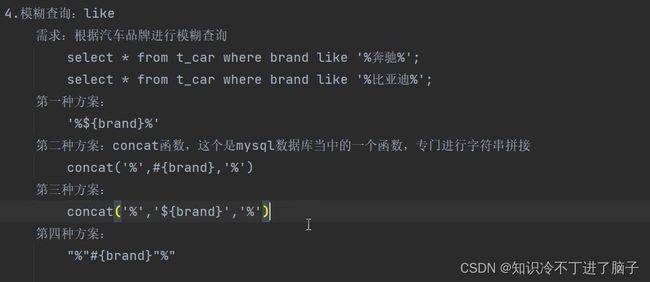- 七、Zabbix — Proxy分布式监控
胖胖不胖、
《Zabbix速学即学即用》zabbix分布式服务器运维监控
目录配置Zabbix-proxy代理1.安装代理2.安装并配置数据库(proxy不能与zabbix-server共享数据库)3.发送zabbix-server源码包中初始化脚本到proxy主机并导入数据库4.修改代理配置文件5.web页面添加并配置代理Zabbix-agent客户端配置1.修改配置文件2.web页面修改,把这些主机修改为通过代理获取数据减少zabbix-server压力便于多地设备
- 某国产数据库“热情过头”的发布会,该收收了!
IT邦德
数据库国产数据库数据库
作者:IT邦德中国DBA联盟(ACDU)成员,15年DBA工作经验Oracle、PostgreSQLACECSDN博客专家及B站知名UP主,全网粉丝15万+擅长主流Oracle、MySQL、PG、高斯及Greenplum备份恢复,安装迁移,性能优化、故障应急处理文章目录01兼容性?02多模融合?03性能玄学?04智能运维?05终极暴击总结哥们儿,还记得十年前DBA圈那场著名论战不?OLTP和OLA
- Java实现简单秒杀功能
在商城项目中,秒杀功能可以说是必不可少的,下面我将使用SpringBoot集成Redis、RabbitMQ、MyBatis-Plus和MySQL来实现一个简单的秒杀系统,系统将包含以下核心功能:使用Redis进行库存预减和用户限流;使用RabbitMQ进行异步下单,提高系统吞吐量;使用MyBatis-Plus操作MySQL数据库;利用Redis执行Lua脚本的原子性防止商品超卖;接口限流(使用Re
- 分布式定时器:原理设计与技术挑战
你一身傲骨怎能输
架构设计分布式
文章摘要分布式定时器用于在分布式系统中可靠、准确地触发定时任务,常见实现方案包括:基于数据库/消息队列的定时扫描、分布式任务调度框架(如Quartz集群、xxl-job)、时间轮/延迟队列(如Redis/Kafka)以及Zookeeper/Etcd协调服务。主要技术挑战包括时钟同步、任务幂等、高可用、负载均衡和故障恢复等。核心难点在于保证任务唯一性、调度精度与分布式一致性,技术选型需权衡轻量级(R
- 常用 SQL 语句摘录
未来无限
C#Winform设计
语句功能--数据操作SELECT--从数据库表中检索数据行和列INSERT--向数据库表添加新数据行DELETE--从数据库表中删除数据行UPDATE--更新数据库表中的数据--数据定义CREATETABLE--创建一个数据库表DROPTABLE--从数据库中删除表ALTERTABLE--修改数据库表结构CREATEVIEW--创建一个视图DROPVIEW--从数据库中删除视图CREATEINDE
- 应用层流量与缓存累积延迟解析
你一身傲骨怎能输
计算机网络缓存
文章摘要应用层流量指OSI模型中应用层协议(如HTTP、gRPC)产生的数据交互,常见于Web请求、微服务通信等场景。缓存累积延迟指多级缓存或消息队列机制中,各级延迟叠加导致数据更新滞后,例如数据库更新后,因消息队列、缓存刷新等环节延迟,用户最终看到的数据可能滞后数秒。两者分别描述了网络通信的数据流机制和分布式系统中的延迟问题。1.应用层流量应用层流量,一般指的是在网络通信的OSI七层模型中,**
- 数据库第四次作业
dustcell.
数据库
1.将mydb9_stusys数据库下的student、sc和course表,备份到本地主机保存为st_msg_bak.sql文件,然后将数据表恢复到自建的db_test数据库中;--备份mysqldump-uroot-pmydb9_stusysstudentsccourse>st_msg_bak.sql#创建目标数据库mysql-uroot-p-e"CREATEDATABASEdb_test;"
- 数据库第五次作业
要求1.定义触发器实现在产品表(product)中每多一个产品,就在操作表(operate)中记录操作方式和时间以及编号记录。注:操作说明:标记执行delete、insert、update2.定义触发器实现在产品表(product)中每更新一个产品,就在操作表(operate)中记录操作方式和时间以及编号记录。3.定义触发器实现在产品表(product)中每删除一个产品就,在操作表(operate
- Java双重检测锁解决MySQL和Redis数据一致性问题
Java双重检测锁解决MySQL和Redis数据一致性问题双重检测锁(Double-CheckedLocking)是一种在多线程环境下优化性能的设计模式,可以用于解决MySQL和Redis之间的数据一致性问题。下面我将介绍如何实现这一方案。问题背景在MySQL和Redis双存储系统中,常见的一致性问题包括:缓存穿透:查询不存在的数据,导致每次请求都打到数据库缓存击穿:热点key失效瞬间,大量请求直
- SQL学习十二、插入数据
沐左
前面学习记录的都是查询数据,那些也是SQL中最常用的语句,这篇我们来学习和积累一下相数据库中插入数据的SQL。另外,需要注意的是,很多数据库对查询操作要求的权限可能低一些,但是对于插入、修改、删除等操作都需要较高的权限。INSERTINTO语句1、插入完整的行例如我们需要插入一条新的订单记录可以这样写:写法一:无需指定要插入数据的列名,只需提供被插入的值即可。SQL格式INSERTINTOtabl
- Jetpack Compose 中 Kotlin 协程的使用
儿歌八万首
jetpackandroidandroiduiComposekotlin协程
本文将带你系统性地理解JetpackCompose中协程的使用场景、API设计理念、生命周期对齐、性能优化与常见误区,助你写出既响应迅速又稳定可靠的现代AndroidUI代码。1.为什么在Compose中离不开协程传统View系统就离不开异步:网络请求、数据库I/O、动画……进入声明式UI时代,异步需求不仅没减少,反而更复杂——状态驱动让数据变化更加频繁。协程凭借以下优势成为Compose首选:语
- SpringBoot架构下智慧物流管理系统设计详解
本文还有配套的精品资源,点击获取简介:本文详细讲解了如何利用SpringBoot框架构建智慧物流管理系统,并涉及关键技术和实现原理。文章首先介绍了SpringBoot的核心组件和工作原理,然后探讨了RESTfulAPI的构建、数据模型与数据库设计、GPS定位服务集成、权限控制和认证、微服务化以及系统测试等关键方面。这一系统结合Java技术优势,提供了一个高效、智能化的物流行业解决方案。1.Spri
- 【设计模式&C#】外观模式(用于解决客户端对系统的许多类进行频繁沟通)
大飞pkz
设计模式设计模式外观模式c#
一种结构性设计模式。特点是将复杂的子系统调用逻辑封装到一个外观类,从而使客户端更容易与系统交互。优点:简化了接口的调用;降低了客户端与子系统的耦合度;封装了子系统的逻辑。缺点:引入了额外的类,可能会增加不必要的复杂性;不适合需要频繁修改的系统。外观类承担的职责过多适合的场景:家庭影院系统;网络服务端的连接;数据库的访问。//Car类,即外观类usingSystem;publicclassCar{/
- 医疗AI与融合数据库的整合:挑战、架构与未来展望(上)
Allen_Lyb
数智化教程(第二期)人工智能数据库架构
引言随着人工智能(AI)在医疗健康领域的广泛应用,数据已成为医疗AI发展的核心驱动力。然而,医疗数据具有极度的异构性(包括结构化电子病历、医学影像向量、基因组JSON/图结构、传感器时序等),传统数据架构难以高效整合。因数据孤岛、复杂ETL流程以及昂贵维护成本,医疗AI平台通常难以充分发挥价值。融合数据库(ConvergedDatabase/多模态一体化数据库)通过支持SQL、JSON、图、向量、
- C#使用Quartz.NET详细讲解
diaochejiang2761
c#
C#使用Quartz.NET详细讲解Quartz.NET是一个开源的作业调度框架,是OpenSymphony的QuartzAPI的.NET移植,它用C#写成,可用于winform和asp.net应用中。它提供了巨大的灵活性而不牺牲简单性。你能够用它来为执行一个作业而创建简单的或复杂的调度。它有很多特征,如:数据库支持,集群,插件,支持cron-like表达式等等。你曾经需要应用执行一个任务吗?这个
- JAVA打手俱乐部护航陪玩小程序+APP+公众号+h5 源码陪玩系统
2401_89605681
嗖微miui52086java小程序开发语言微信小程序uni-app
万亿游戏社交蓝海:JAVA打手俱乐部护航陪玩系统源码解析(小程序+APP+H5全端覆盖)在电竞产业爆发与社交需求升级的双重驱动下,全球游戏陪玩市场规模突破120亿美元(2025年Newzoo数据),而传统平台面临信任危机、匹配低效、变现单一等痛点。JAVA打手俱乐部护航陪玩系统源码以SpringBoot+MyBatisPlus+MySQL为核心,通过Uni-app跨端开发实现小程序/APP/公众号
- JAVA打手俱乐部护航陪玩小程序+APP+公众号+h5 源码陪玩系统
源码_V_saaskw
嗖微miui52086java小程序开发语言uni-app微信小程序微信公众平台
万亿游戏社交蓝海:JAVA打手俱乐部护航陪玩系统源码解析(小程序+APP+H5全端覆盖)在电竞产业爆发与社交需求升级的双重驱动下,全球游戏陪玩市场规模突破120亿美元(2025年Newzoo数据),而传统平台面临信任危机、匹配低效、变现单一等痛点。JAVA打手俱乐部护航陪玩系统源码以SpringBoot+MyBatisPlus+MySQL为核心,通过Uni-app跨端开发实现小程序/APP/公众号
- JAVA打手俱乐部护航陪玩小程序+APP+公众号+h5 源码陪玩系统
狂团商城小师妹
嗖微miui52086java小程序开发语言微信小程序javascript
万亿游戏社交蓝海:JAVA打手俱乐部护航陪玩系统源码解析(小程序+APP+H5全端覆盖)在电竞产业爆发与社交需求升级的双重驱动下,全球游戏陪玩市场规模突破120亿美元(2025年Newzoo数据),而传统平台面临信任危机、匹配低效、变现单一等痛点。JAVA打手俱乐部护航陪玩系统源码以SpringBoot+MyBatisPlus+MySQL为核心,通过Uni-app跨端开发实现小程序/APP/公众号
- JAVA无人系统台球室源码自助开台约球交友系统源码小程序
全域无人化运营革命:JAVA无人系统台球室源码解析(支持茶室/棋牌/KTV多业态)在共享经济与无人化浪潮的推动下,全球自助娱乐市场规模突破千亿美元,传统台球室、棋牌室面临人力成本高、运营效率低、用户粘性弱等痛点。JAVA无人系统台球室源码以SpringBoot+MyBatisPlus+MySQL为核心技术栈,通过Uni-app跨端开发实现小程序/H5/APP全渠道覆盖,集成AI裁判、社交裂变、多支
- 本地开发用ASP.NET Core Web API项目创建及测试
way_hj
web开发asp.net后端
1.服务端代码(C#)1.1创建ASP.NETCoreWebAPI项目打开VisualStudio2022。选择“创建新项目”。选择“ASP.NETCoreWebAPI”模板,点击“下一步”。输入项目名称(如OracleApi),选择项目位置,点击“创建”。1.2安装Oracle数据库依赖使用NuGet管理包工具在项目中安装Oracle数据库的EFCore依赖:Oracle.EntityFrame
- Mybatis嵌套foreach的坑
MiaeLKK
今天用xml写sql出现问题,mapper入参为集合,其中要获取集合中每个元素的某个属性,这个属性也是个集合。本来按照以前foreach写法,给集合项取个变量名,直接用这个变量名.属性名即可,但如果属性为集合好像就会报错。错误代码示例:andttask.fcreatetime>#{task.createtime[0]}andttask.fcreatetime<#{task.create
- 【数据库】触发器 Trigger
有事请出门右转
触发器Trigger概念:数据库中的一个对象,相当于JS中的监听器触发器可以监听增删改三个动作比如说我想监听一张表,只要我增删改了这张表中的数据,我就可以触发这个触发器,去往另外一张表中记录一下日志语法:DELIMITER$$CREATETRIGGER`数据库名`.`触发器名`BEFORE/AFTERINSERT/UPDATE/DELETEON`数据库名`.`要监听的表名`FOREACHROW--
- ASP.NET Core Web API 内存缓存(IMemoryCache)入门指南
王维志
asp.netwebapiasp.net缓存后端c#.net
在WebAPI开发中,频繁访问数据库或第三方服务可能会带来性能瓶颈。为了提升接口响应速度并减轻后端压力,使用缓存是非常有效的优化手段。本文将带你快速上手ASP.NETCore提供的内存缓存(IMemoryCache),无需安装额外库,轻量、简单、适合中小项目什么是IMemoryCache?IMemoryCache是ASP.NETCore自带的缓存机制,使用服务器内存来存储数据对象,单机部署即可使用
- Elasticsearch数据库的数据同步机制
数据库管理艺术
elasticsearch数据库jenkinsai
Elasticsearch数据库的数据同步机制关键词:Elasticsearch、数据同步、近实时搜索、倒排索引、translog、refresh、flush、副本同步摘要:本文深入探讨Elasticsearch数据库的数据同步机制,从底层原理到实际应用进行全面解析。文章首先介绍Elasticsearch的基本架构和数据模型,然后详细分析其近实时搜索的实现原理,包括索引刷新(Refresh)、事务
- Golang 数据库缓存策略:减少 SQL 查询次数
Golang数据库缓存策略:减少SQL查询次数关键词:Golang、数据库缓存、SQL查询次数、缓存策略、性能优化摘要:本文主要探讨了在Golang中使用数据库缓存策略来减少SQL查询次数的相关技术。通过深入讲解缓存的核心概念、算法原理、实际应用场景等内容,帮助读者理解如何利用缓存优化数据库性能。同时,结合具体的代码案例,详细展示了在Golang中实现缓存策略的方法,最后分析了未来的发展趋势与面临
- 剖析数据库领域 ODBC 的工作原理
剖析数据库领域ODBC的工作原理关键词:ODBC、数据库、工作原理、驱动程序、应用程序摘要:本文深入剖析了数据库领域中ODBC(开放数据库互连)的工作原理。首先介绍了ODBC产生的背景和重要性,明确目标读者为数据库开发者和技术爱好者。接着对ODBC的核心概念进行解析,用生活化的比喻让读者轻松理解其关键概念和概念间的关系。然后详细阐述了ODBC的技术原理与实现,包括工作流程、代码示例以及数学模型解释
- Electron实现“仅首次运行时创建SQLite数据库”
几道之旅
数据库electronsqlite
在桌面应用中,SQLite因其轻量、嵌入式特性成为本地存储的热门选择。但若重复初始化数据库,会导致数据覆盖或冗余。本文将详解如何让Electron应用仅在首次启动时创建SQLite数据库,后续启动直接连接现有库。一、核心逻辑与实现原理核心思路:通过检测数据库文件是否存在,决定是否执行建表操作。关键技术点:路径管理:使用Electron的app.getPath('userData')获取用户数据目录
- [特殊字符] Electron 中的 `global` 变量
几道之旅
electronjavascript前端
在Electron的多进程架构(主进程+渲染进程)中,global对象是主进程内全局变量的核心载体,用于存储跨窗口或模块共享的数据或服务。其设计类似于Node.js的全局对象,但在Electron中需特别注意进程边界和安全性限制。⚙️一、global的核心作用与使用场景主进程中的全局存储global仅在主进程中可用,用于保存需跨多个渲染进程访问的数据或服务。示例:存储全局缓存、数据库连接实例或配置
- AI-调查研究-33- 咖啡价格战 连锁咖啡低价策略全景分析:补贴、成本与盈利模型
点一下关注吧!!!非常感谢!!持续更新!!!AI篇持续更新中!(长期更新)AI炼丹日志-30-新发布【1T万亿】参数量大模型!Kimi‑K2开源大模型解读与实践,持续打造实用AI工具指南!Java篇正式开启!(300篇)目前2025年07月16日更新到:Java-74深入浅出RPCDubboAdmin可视化管理安装使用源码编译、Docker启动MyBatis已完结,Spring已完结,Nginx已
- Redis 分区
奇点一氪
分区是分割数据到多个Redis实例的处理过程,因此每个实例只保存key的一个子集。分区的优势通过利用多台计算机内存的和值,允许我们构造更大的数据库。通过多核和多台计算机,允许我们扩展计算能力;通过多台计算机和网络适配器,允许我们扩展网络带宽。分区的不足redis的一些特性在分区方面表现的不是很好:涉及多个key的操作通常是不被支持的。举例来说,当两个set映射到不同的redis实例上时,你就不能对
- web报表工具FineReport常见的数据集报错错误代码和解释
老A不折腾
web报表finereport代码可视化工具
在使用finereport制作报表,若预览发生错误,很多朋友便手忙脚乱不知所措了,其实没什么,只要看懂报错代码和含义,可以很快的排除错误,这里我就分享一下finereport的数据集报错错误代码和解释,如果有说的不准确的地方,也请各位小伙伴纠正一下。
NS-war-remote=错误代码\:1117 压缩部署不支持远程设计
NS_LayerReport_MultiDs=错误代码
- Java的WeakReference与WeakHashMap
bylijinnan
java弱引用
首先看看 WeakReference
wiki 上 Weak reference 的一个例子:
public class ReferenceTest {
public static void main(String[] args) throws InterruptedException {
WeakReference r = new Wea
- Linux——(hostname)主机名与ip的映射
eksliang
linuxhostname
一、 什么是主机名
无论在局域网还是INTERNET上,每台主机都有一个IP地址,是为了区分此台主机和彼台主机,也就是说IP地址就是主机的门牌号。但IP地址不方便记忆,所以又有了域名。域名只是在公网(INtERNET)中存在,每个域名都对应一个IP地址,但一个IP地址可有对应多个域名。域名类型 linuxsir.org 这样的;
主机名是用于什么的呢?
答:在一个局域网中,每台机器都有一个主
- oracle 常用技巧
18289753290
oracle常用技巧 ①复制表结构和数据 create table temp_clientloginUser as select distinct userid from tbusrtloginlog ②仅复制数据 如果表结构一样 insert into mytable select * &nb
- 使用c3p0数据库连接池时出现com.mchange.v2.resourcepool.TimeoutException
酷的飞上天空
exception
有一个线上环境使用的是c3p0数据库,为外部提供接口服务。最近访问压力增大后台tomcat的日志里面频繁出现
com.mchange.v2.resourcepool.TimeoutException: A client timed out while waiting to acquire a resource from com.mchange.v2.resourcepool.BasicResou
- IT系统分析师如何学习大数据
蓝儿唯美
大数据
我是一名从事大数据项目的IT系统分析师。在深入这个项目前需要了解些什么呢?学习大数据的最佳方法就是先从了解信息系统是如何工作着手,尤其是数据库和基础设施。同样在开始前还需要了解大数据工具,如Cloudera、Hadoop、Spark、Hive、Pig、Flume、Sqoop与Mesos。系 统分析师需要明白如何组织、管理和保护数据。在市面上有几十款数据管理产品可以用于管理数据。你的大数据数据库可能
- spring学习——简介
a-john
spring
Spring是一个开源框架,是为了解决企业应用开发的复杂性而创建的。Spring使用基本的JavaBean来完成以前只能由EJB完成的事情。然而Spring的用途不仅限于服务器端的开发,从简单性,可测试性和松耦合的角度而言,任何Java应用都可以从Spring中受益。其主要特征是依赖注入、AOP、持久化、事务、SpringMVC以及Acegi Security
为了降低Java开发的复杂性,
- 自定义颜色的xml文件
aijuans
xml
<?xml version="1.0" encoding="utf-8"?> <resources> <color name="white">#FFFFFF</color> <color name="black">#000000</color> &
- 运营到底是做什么的?
aoyouzi
运营到底是做什么的?
文章来源:夏叔叔(微信号:woshixiashushu),欢迎大家关注!很久没有动笔写点东西,近些日子,由于爱狗团产品上线,不断面试,经常会被问道一个问题。问:爱狗团的运营主要做什么?答:带着用户一起嗨。为什么是带着用户玩起来呢?究竟什么是运营?运营到底是做什么的?那么,我们先来回答一个更简单的问题——互联网公司对运营考核什么?以爱狗团为例,绝大部分的移动互联网公司,对运营部门的考核分为三块——用
- js面向对象类和对象
百合不是茶
js面向对象函数创建类和对象
接触js已经有几个月了,但是对js的面向对象的一些概念根本就是模糊的,js是一种面向对象的语言 但又不像java一样有class,js不是严格的面向对象语言 ,js在java web开发的地位和java不相上下 ,其中web的数据的反馈现在主流的使用json,json的语法和js的类和属性的创建相似
下面介绍一些js的类和对象的创建的技术
一:类和对
- web.xml之资源管理对象配置 resource-env-ref
bijian1013
javaweb.xmlservlet
resource-env-ref元素来指定对管理对象的servlet引用的声明,该对象与servlet环境中的资源相关联
<resource-env-ref>
<resource-env-ref-name>资源名</resource-env-ref-name>
<resource-env-ref-type>查找资源时返回的资源类
- Create a composite component with a custom namespace
sunjing
https://weblogs.java.net/blog/mriem/archive/2013/11/22/jsf-tip-45-create-composite-component-custom-namespace
When you developed a composite component the namespace you would be seeing would
- 【MongoDB学习笔记十二】Mongo副本集服务器角色之Arbiter
bit1129
mongodb
一、复本集为什么要加入Arbiter这个角色 回答这个问题,要从复本集的存活条件和Aribter服务器的特性两方面来说。 什么是Artiber? An arbiter does
not have a copy of data set and
cannot become a primary. Replica sets may have arbiters to add a
- Javascript开发笔记
白糖_
JavaScript
获取iframe内的元素
通常我们使用window.frames["frameId"].document.getElementById("divId").innerHTML这样的形式来获取iframe内的元素,这种写法在IE、safari、chrome下都是通过的,唯独在fireforx下不通过。其实jquery的contents方法提供了对if
- Web浏览器Chrome打开一段时间后,运行alert无效
bozch
Webchormealert无效
今天在开发的时候,突然间发现alert在chrome浏览器就没法弹出了,很是怪异。
试了试其他浏览器,发现都是没有问题的。
开始想以为是chorme浏览器有啥机制导致的,就开始尝试各种代码让alert出来。尝试结果是仍然没有显示出来。
这样开发的结果,如果客户在使用的时候没有提示,那会带来致命的体验。哎,没啥办法了 就关闭浏览器重启。
结果就好了,这也太怪异了。难道是cho
- 编程之美-高效地安排会议 图着色问题 贪心算法
bylijinnan
编程之美
import java.util.ArrayList;
import java.util.Collections;
import java.util.List;
import java.util.Random;
public class GraphColoringProblem {
/**编程之美 高效地安排会议 图着色问题 贪心算法
* 假设要用很多个教室对一组
- 机器学习相关概念和开发工具
chenbowen00
算法matlab机器学习
基本概念:
机器学习(Machine Learning, ML)是一门多领域交叉学科,涉及概率论、统计学、逼近论、凸分析、算法复杂度理论等多门学科。专门研究计算机怎样模拟或实现人类的学习行为,以获取新的知识或技能,重新组织已有的知识结构使之不断改善自身的性能。
它是人工智能的核心,是使计算机具有智能的根本途径,其应用遍及人工智能的各个领域,它主要使用归纳、综合而不是演绎。
开发工具
M
- [宇宙经济学]关于在太空建立永久定居点的可能性
comsci
经济
大家都知道,地球上的房地产都比较昂贵,而且土地证经常会因为新的政府的意志而变幻文本格式........
所以,在地球议会尚不具有在太空行使法律和权力的力量之前,我们外太阳系统的友好联盟可以考虑在地月系的某些引力平衡点上面,修建规模较大的定居点
- oracle 11g database control 证书错误
daizj
oracle证书错误oracle 11G 安装
oracle 11g database control 证书错误
win7 安装完oracle11后打开 Database control 后,会打开em管理页面,提示证书错误,点“继续浏览此网站”,还是会继续停留在证书错误页面
解决办法:
是 KB2661254 这个更新补丁引起的,它限制了 RSA 密钥位长度少于 1024 位的证书的使用。具体可以看微软官方公告:
- Java I/O之用FilenameFilter实现根据文件扩展名删除文件
游其是你
FilenameFilter
在Java中,你可以通过实现FilenameFilter类并重写accept(File dir, String name) 方法实现文件过滤功能。
在这个例子中,我们向你展示在“c:\\folder”路径下列出所有“.txt”格式的文件并删除。 1 2 3 4 5 6 7 8 9 10 11 12 13 14 15 16
- C语言数组的简单以及一维数组的简单排序算法示例,二维数组简单示例
dcj3sjt126com
carray
# include <stdio.h>
int main(void)
{
int a[5] = {1, 2, 3, 4, 5};
//a 是数组的名字 5是表示数组元素的个数,并且这五个元素分别用a[0], a[1]...a[4]
int i;
for (i=0; i<5; ++i)
printf("%d\n",
- PRIMARY, INDEX, UNIQUE 这3种是一类 PRIMARY 主键。 就是 唯一 且 不能为空。 INDEX 索引,普通的 UNIQUE 唯一索引
dcj3sjt126com
primary
PRIMARY, INDEX, UNIQUE 这3种是一类PRIMARY 主键。 就是 唯一 且 不能为空。INDEX 索引,普通的UNIQUE 唯一索引。 不允许有重复。FULLTEXT 是全文索引,用于在一篇文章中,检索文本信息的。举个例子来说,比如你在为某商场做一个会员卡的系统。这个系统有一个会员表有下列字段:会员编号 INT会员姓名
- java集合辅助类 Collections、Arrays
shuizhaosi888
CollectionsArraysHashCode
Arrays、Collections
1 )数组集合之间转换
public static <T> List<T> asList(T... a) {
return new ArrayList<>(a);
}
a)Arrays.asL
- Spring Security(10)——退出登录logout
234390216
logoutSpring Security退出登录logout-urlLogoutFilter
要实现退出登录的功能我们需要在http元素下定义logout元素,这样Spring Security将自动为我们添加用于处理退出登录的过滤器LogoutFilter到FilterChain。当我们指定了http元素的auto-config属性为true时logout定义是会自动配置的,此时我们默认退出登录的URL为“/j_spring_secu
- 透过源码学前端 之 Backbone 三 Model
逐行分析JS源代码
backbone源码分析js学习
Backbone 分析第三部分 Model
概述: Model 提供了数据存储,将数据以JSON的形式保存在 Model的 attributes里,
但重点功能在于其提供了一套功能强大,使用简单的存、取、删、改数据方法,并在不同的操作里加了相应的监听事件,
如每次修改添加里都会触发 change,这在据模型变动来修改视图时很常用,并且与collection建立了关联。
- SpringMVC源码总结(七)mvc:annotation-driven中的HttpMessageConverter
乒乓狂魔
springMVC
这一篇文章主要介绍下HttpMessageConverter整个注册过程包含自定义的HttpMessageConverter,然后对一些HttpMessageConverter进行具体介绍。
HttpMessageConverter接口介绍:
public interface HttpMessageConverter<T> {
/**
* Indicate
- 分布式基础知识和算法理论
bluky999
算法zookeeper分布式一致性哈希paxos
分布式基础知识和算法理论
BY
[email protected]
本文永久链接:http://nodex.iteye.com/blog/2103218
在大数据的背景下,不管是做存储,做搜索,做数据分析,或者做产品或服务本身,面向互联网和移动互联网用户,已经不可避免地要面对分布式环境。笔者在此收录一些分布式相关的基础知识和算法理论介绍,在完善自我知识体系的同
- Android Studio的.gitignore以及gitignore无效的解决
bell0901
androidgitignore
github上.gitignore模板合集,里面有各种.gitignore : https://github.com/github/gitignore
自己用的Android Studio下项目的.gitignore文件,对github上的android.gitignore添加了
# OSX files //mac os下 .DS_Store
- 成为高级程序员的10个步骤
tomcat_oracle
编程
What
软件工程师的职业生涯要历经以下几个阶段:初级、中级,最后才是高级。这篇文章主要是讲如何通过 10 个步骤助你成为一名高级软件工程师。
Why
得到更多的报酬!因为你的薪水会随着你水平的提高而增加
提升你的职业生涯。成为了高级软件工程师之后,就可以朝着架构师、团队负责人、CTO 等职位前进
历经更大的挑战。随着你的成长,各种影响力也会提高。
- mongdb在linux下的安装
xtuhcy
mongodblinux
一、查询linux版本号:
lsb_release -a
LSB Version: :base-4.0-amd64:base-4.0-noarch:core-4.0-amd64:core-4.0-noarch:graphics-4.0-amd64:graphics-4.0-noarch:printing-4.0-amd64:printing-4.0-noa



